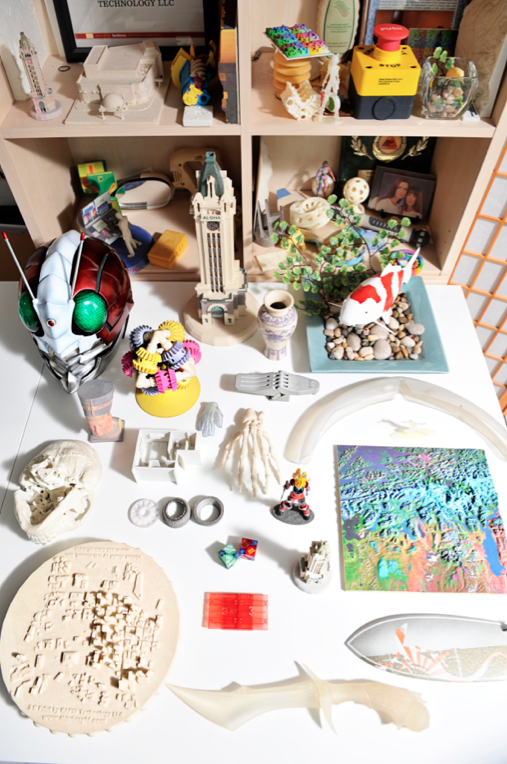[sidebar]
On the 12th floor of a small apartment complex in downtown Honolulu, a scale model of the same city the apartment overlooks is being printed layer by layer on a 3D printer. Up next are pieces for a life size suit of armor for a costume in an upcoming movie and a surfboard nose guard made of photo-cured plastic resin. Hidden behind a 4-inch anime figurine and an artist’s rendition of a koi, is a small, unremarkable ring-shaped object.
“That’s part of an acetabular cup, which receives the ball joint in the hip,” explains Emil Reyes, owner of Rapid Technology, a company that specializes in 3D printing. “Say if you destroyed your shoulder and needed reconstruction, we would scan the opposite shoulder, reverse it and print it. The cup is made from medical-grade titanium and will last longer than the person.”
It’s a process that’s medically accepted in Europe and is currently under review by the FDA. Elsewhere, 3D printers are printing out other body parts and organs. “Vision Tech, one of the companies we represent, printed out a piece of heart tissue that took a beat,” says Reyes. “That’s the future concept, when your liver goes bad, they just print you a new one.”
[/sidebar]

Three-dimensional printers work much like traditional inkjet printers. Printing is based on a principle called layered fabrication. “You can think of it like stacking a deck of cards, but instead of an entire card, it only stacks a layer that matches the layer of the object.”
Like Gutenberg’s movable press, 3D printing technology has the capacity to revolutionize society. The printers are capable of printing movable parts and gears, potentially reducing, or even eliminating, the need for assembly lines; metal printers are printing new types of alloys by fusing different types of powders. “It’s called ‘disruptive technology’ because it’s changing a lot of the industry very quickly,” says Reyes, who first encountered 3D printing technology while working as an analyst and a future projects officer for the military. There, his job was to develop technology and get it to the soldier as soon as possible, though Reyes acknowledges that at the time, 3D technology wasn’t ready.
“When we first thought about opening up shop, we were told, ‘You’re in Hawai‘i, you don’t do manufacturing there,” says Reyes. “Because this technology has always been suited for manufacturing, we had to write our entire business plan and explain how we could make a go at it here. And it’s been seven years since.” Certainly not a lot of time in an ever-changing world of rapid technology.


